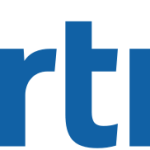- Industry: Consulting
- Number of terms: 1807
- Number of blossaries: 2
- Company Profile:
Gartner delivers technology research to global technology business leaders to make informed decisions on key initiatives.
Telecom services now include fixed-network services (data retail, Internet retail, voice retail and wholesale) and mobile services.
Fixed-data services — Includes all dedicated/private line, packet and circuit-switched access services (for example, frame relay, asynchronous transfer mode, IP, Integrated Services Digital Network, DSL, multichannel multipoint distribution service (MMDS) and satellite) retail revenue. No differentiation is made between the type of traffic or application carried by these services. All types of transmissions — nonvoice data, image, video, fax, interactive services and even voice — can be carried by these services regardless of whether the source format is analog or digital. All revenue reflects service provider annualized retail revenue — paid for by the business and residential end user of the service; no wholesale or carrier-to-carrier revenue is included.
Fixed-voice services — This reflects retail voice service revenue for all services that are sold as such to end users and includes the provision of local and long-distance services related to voice (calling charges, line rental/subscription and connection fees are included in this category), enhanced voice services, data and fax transmission over the circuit-switched PSTN, and retail voice over IP revenue — paid for by the business and residential end user of the service; no wholesale or carrier-to-carrier revenue is included.
Mobile telecom services — Income from mobile telephone calls and mobile data usage (Short Message Service (SMS) and mobile data access) from all mobile operators in that regional market. Consumer charges are removed. Income from mobile telephone calling charges, mobile data access, SMS charges, line rental/subscription and connection fees are included in this category.
Wholesale/carrier services are not included as a component of business IT spending. Wholesale/carrier services reflect carrier revenue from carrier-to-carrier service transactions.
Industry:Technology
Telecom equipment now includes mobile devices, PBX equipment (contact center, telephony and IP telephony), and network equipment (LAN and WAN).
Enterprise networking and communications — Enterprise networking and communications includes telecom equipment and systems that are based in consumer and business locations and that connect either with the PSTN or to private data or voice networks.
Industry:Technology
Catch-all/generic phrase covering all entities that provide some form of telecommunication services (fixed and/or mobile; voice and/or data) as their primary business to all or a subset of consumers, enterprises, governments and other telecom service providers.
Industry:Technology
This segment includes enterprise equipment services and infrastructure equipment services.
• Enterprise equipment services — Enterprise equipment consists of telecom equipment and systems that are based in business locations, and that connect either with the public switched telephone network (PSTN) or to private data voice networks.
• Carrier infrastructure equipment services — Infrastructure equipment includes all forms of equipment (and some systems and integrally related services) that combine to form the communications networks used by public service operators worldwide. A good example is the PSTN. Others include IP and other data networks as well as mobile networks. Infrastructure equipment includes six major building blocks: switching, transport, access, signaling, support and mobile infrastructure.
Industry:Technology
Telecom analytics encompass sophisticated business intelligence (BI) technologies that are packaged to satisfy the complex requirements of telecom organizations. These include increasing sales, reducing churn and fraud, improving risk management and decreasing operational costs. Analytics solutions usually extend beyond the capabilities of regular BI solutions for reporting and dashboarding to include capabilities ranging from ad hoc querying and multidimensional analyses to predictive and descriptive modeling, data mining, text analytics, forecasting and optimization. The adoption of analytics in telecommunications is intended to improve visibility into core operations, internal processes and market conditions, discern trends and establish forecasts. Future analytics will also include data from systems beyond traditional billing and mediation sources. These will include deep packet inspection, home subscriber server, video optimization equipment and on-device clients, among others.
Industry:Technology
A contraction of the term “telephone company.” It generally refers to the local-exchange carrier (LEC).
Industry:Technology
The concept of forming one enterprisewide view of the customer across all customer contact channels (i.e., sales, marketing, and customer service and support). It is a complex area, requiring complex solutions to problems of integration, data flow, data access and marketing strategy. A critical component is the database that serves as the customer information repository.
Industry:Technology
The management and control of software via a platform-independent automated facility that:
1. Ensures that access and use are in alignment with associated licensing agreements.
2. Provides the basis for determining enterprise use requirements.
3. Integrates with systems and network management tools.
Industry:Technology
German for “beat” — the pace of production based on customer demand or pull.
Industry:Technology
Tag management systems simplify the deployment and maintenance of JavaScript tags, used in online content to interface with applications such as Web analytics, personalization and advertising. A single tag replaces all other tags and when executed, the tag manager publishes other tags, based on business rules and a common data model. This decouples tag control and maintenance from the life cycle of other content, improves the speed of changes, the quality of tags and provides an audit trail.
Industry:Technology
